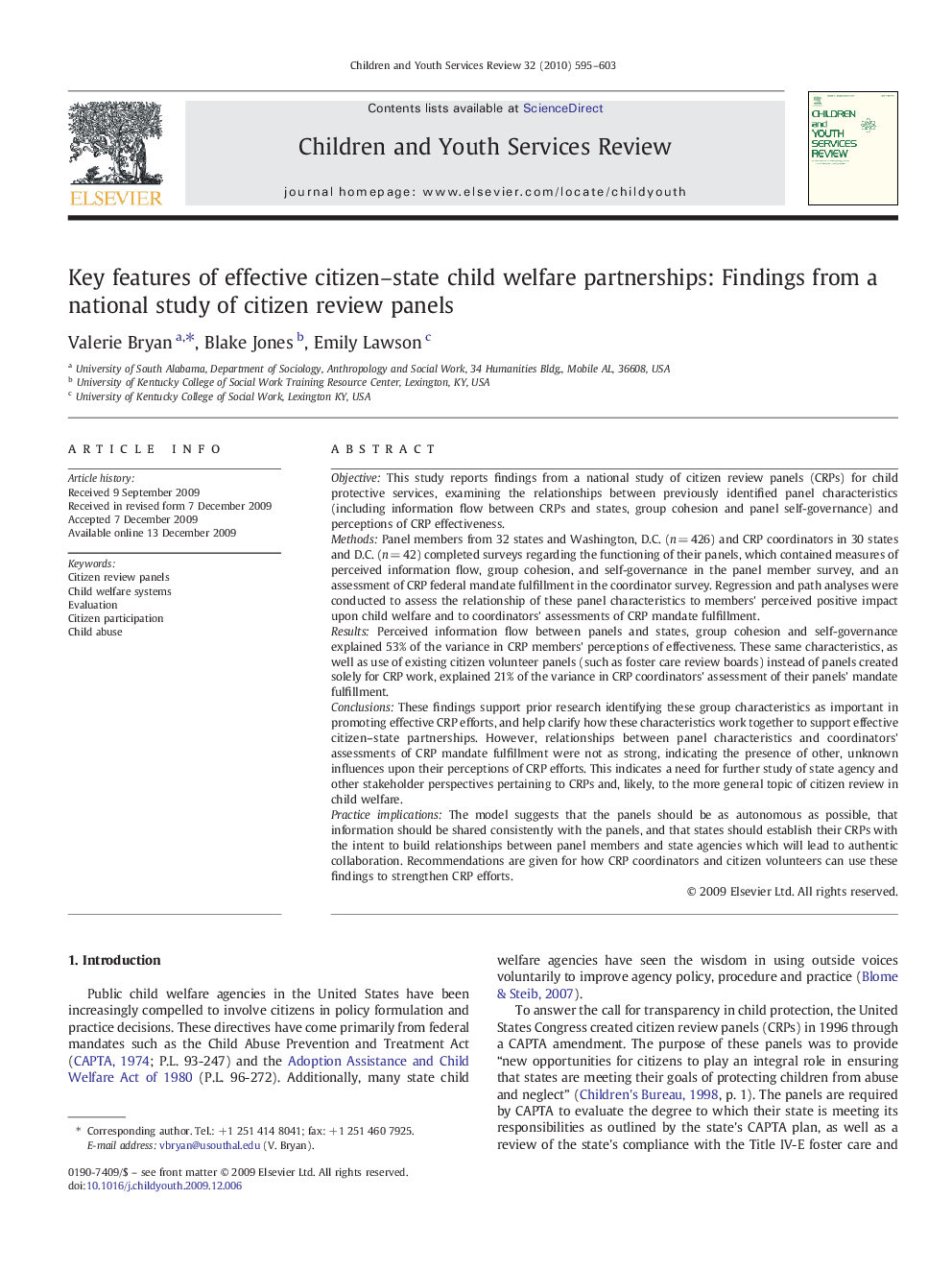| کد مقاله | کد نشریه | سال انتشار | مقاله انگلیسی | نسخه تمام متن |
|---|---|---|---|---|
| 346796 | 617835 | 2010 | 9 صفحه PDF | دانلود رایگان |

ObjectiveThis study reports findings from a national study of citizen review panels (CRPs) for child protective services, examining the relationships between previously identified panel characteristics (including information flow between CRPs and states, group cohesion and panel self-governance) and perceptions of CRP effectiveness.MethodsPanel members from 32 states and Washington, D.C. (n = 426) and CRP coordinators in 30 states and D.C. (n = 42) completed surveys regarding the functioning of their panels, which contained measures of perceived information flow, group cohesion, and self-governance in the panel member survey, and an assessment of CRP federal mandate fulfillment in the coordinator survey. Regression and path analyses were conducted to assess the relationship of these panel characteristics to members' perceived positive impact upon child welfare and to coordinators' assessments of CRP mandate fulfillment.ResultsPerceived information flow between panels and states, group cohesion and self-governance explained 53% of the variance in CRP members' perceptions of effectiveness. These same characteristics, as well as use of existing citizen volunteer panels (such as foster care review boards) instead of panels created solely for CRP work, explained 21% of the variance in CRP coordinators' assessment of their panels' mandate fulfillment.ConclusionsThese findings support prior research identifying these group characteristics as important in promoting effective CRP efforts, and help clarify how these characteristics work together to support effective citizen–state partnerships. However, relationships between panel characteristics and coordinators' assessments of CRP mandate fulfillment were not as strong, indicating the presence of other, unknown influences upon their perceptions of CRP efforts. This indicates a need for further study of state agency and other stakeholder perspectives pertaining to CRPs and, likely, to the more general topic of citizen review in child welfare.Practice implicationsThe model suggests that the panels should be as autonomous as possible, that information should be shared consistently with the panels, and that states should establish their CRPs with the intent to build relationships between panel members and state agencies which will lead to authentic collaboration. Recommendations are given for how CRP coordinators and citizen volunteers can use these findings to strengthen CRP efforts.
Journal: Children and Youth Services Review - Volume 32, Issue 4, April 2010, Pages 595–603